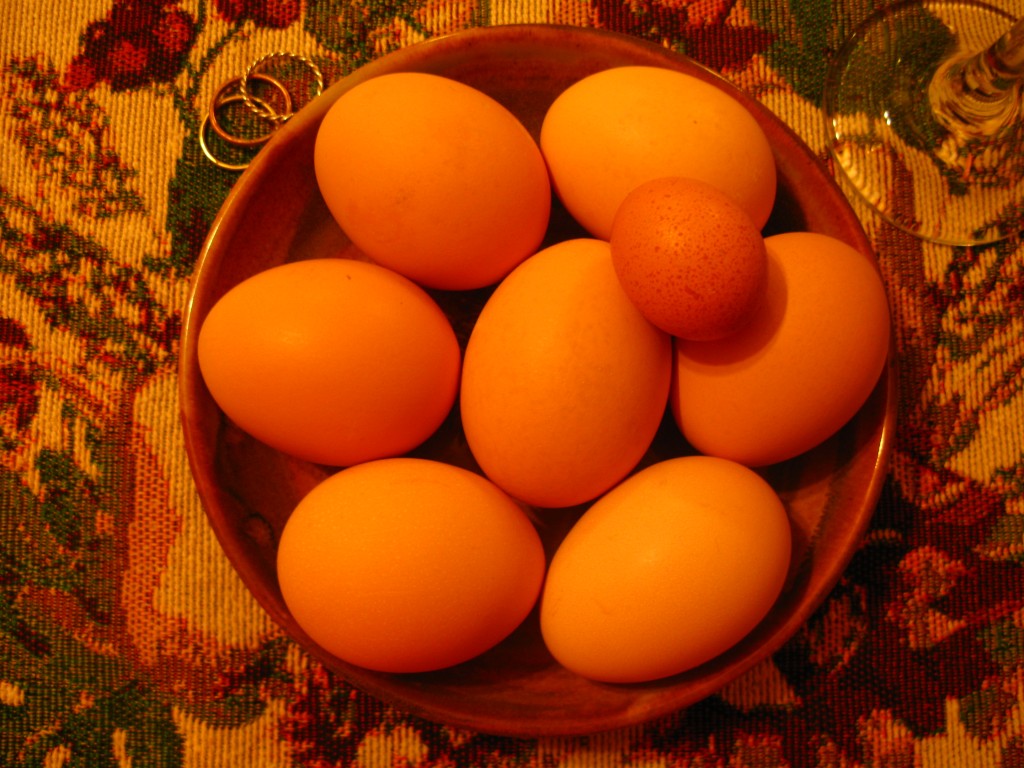something amazing happened to me the other day. i’m so excited about this that you would think that i happened to lay my own egg! (that will come some day, but not yet!)
here’s what really happened:
i was collecting eggs in the afternoon and i found an amazing, tiny egg snuggled in the nest box with the other standard and bantam sized eggs. at first i thought my eyes were playing tricks on me. but i quickly realized that there was in fact a tiny, darker egg laying in the nest box with the other eggs.

the wind egg, laying on top of other standard eggs. you can see that the wind egg is darker and much smaller!
having never seen or heard of this before, i clutched that little tiny egg closely, being sure to cradle it in my hand until i got inside and placed it somewhere safe.
later, i used a technique that my mom taught be years ago for preserving beautiful or interesting egg shells: blowing out the egg. this technique allows you to preserve the egg for many, many years!
the procedure is simple, really. you use a safety pin to poke a small hole in the bottom of the egg (a couple millimeters across) and an even smaller hole in the top. then you proceed to blow into the top hole so that all of the contents of the egg are blown through the bottom hole (be sure to save the egg for using in a recipe or for scrambled eggs).
as i was blowing out the egg, i saw that there was no yolk inside, and the egg white seemed a little murky and did not look very delicious. so, jason did some research about the tiny egg!
he found that such small eggs are often called wind eggs. they are commonly a shade lighter or a shade darker than the hen’s usual egg and they are usually a hen’s first attempt at laying. these little eggs do not include a yolk because, well, they are not really an egg, actually. they may have an egg shell around them, but they could not support life as an egg should.
they are usually made when some portion of the hen’s reproductive tissue breaks off (no harm to her, though) and her body thinks that the tissue passing through her nether-regions is the beginning of an egg. so, her body slaps a shell on that baby and sends it on out into the world.
these eggs are also called fairy eggs, and i can see why: what child wouldn’t want to believe that a fairy had been playing with her chickens! in the past, these eggs were called cock eggs, and because of their size and the fact that they aren’t viable, people originally believed roosters had laid them.
how amazing! an amazing history for an amazing little “egg.” i will certainly forever cherish my little wind egg, and keep it as a reminder that there is always true magic that nature has to offer us!
.:.